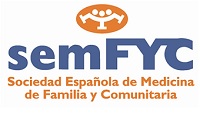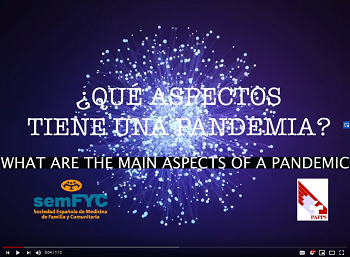semFYC videos on COVID-19 and Mental Health

After its success in Spain, the Spanish Society of Family and Community Medicine (semFYC) has translated a series of videos that analyse the main features of COVID19 pandemic and its effects on global Mental Health.
The semFYC Working Group on Mental Health from the Program on Preventive and Health Promotion Activities (PAPPS) has produced a series of videos in which the Working Group’s Chair, Dr Jorge Tizón, explains the different issues of pandemics and the way they affect human’s mental health.
Overall, semFYC has produced six videos which were launched during the first weeks of the COVID-19 pandemic, which were especially hard in Spain. These videos were shared on semFYC social networks and websites, achieving a great success among the scientific community.
All the videos from semFYC can be seen on the YouTube COVID-19 playlist, and all have English subtitles.
View the series 1. What are the aspects of this pandemic?
1. What are the aspects of this pandemic?
In the
first video, Dr Tizón explains the biological, psychological and social aspects of a pandemic, and he links them to the idea of globalization.
2. What measures can we adopt regarding Mental Health?
The
second video is aimed at prevention measures regarding Mental Health when facing the COVID-19 health crisis. The Working Group points out three measures to be taken:
• Get good information (from trusted media, with scientific evidence) and share reliable news.
• Good hygiene and self-care.
• Respect differences, as people have different reactions when facing stressing and uncertain situations.
3. Eight Specific characteristics of this pandemic
In this
third video, Dr Tizón explains several features which make this COVID 19 pandemic different from other pandemics in human history, especially relating to its global effects due to “emotional globalization”.
4. What will we need once the pandemic is over?
In the
fourth video, the Working Group on Mental Health wonders, “what will be needed in Primary Care once the pandemic is over?”, and it states that family doctors and health care professionals in the first level of care need more emotional and psychological resources to deal with mourning.
5. What types of mourning processes will we encounter?
Continuing with this idea of mourning, the following two videos analyze what types of grieving will be found in primary care (such as over economic losses, travel plans, or even relationships within our families after the lockdown).
Fifth video.
6. How will patient’s mourning be communicated?
In the
final video, the Working Group explains why the primary care system is the best health setting when facing a pandemic and, also, it talks about the importance of professional training, team work, and it makes a claim for more investment in the primary Care workforce worldwide.